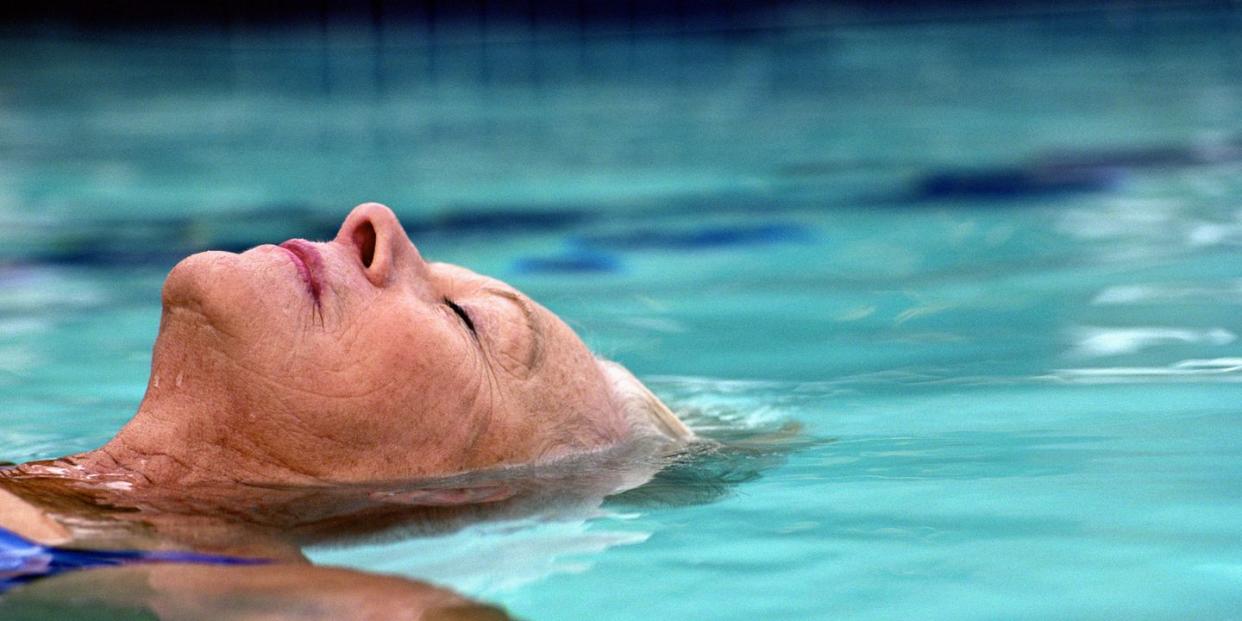How to Harness the Healing Powers of Warm Water Therapy for Arthritis Relief

If you’ve ever been sore after a hard workout and sought relief with a hot bath, you’re aware of the healing properties of warm water. Whether suffering from osteoarthritis or general achy joints, a person may find pain relief via physical therapy–related exercises performed in a warm-water pool, says Nicole Needles, P.T., D.P.T., a member of the Arthritis Foundation expert panel, CSM Program cochair at the Academy of Aquatic Physical Therapy, and a clinician at Nemours Children’s Hospital in Delaware. Here, she explains how.
What exactly is warm-water exercise?
It’s any exercise that addresses areas of joint limitations and is performed in a warm-water pool (with temps between 90°F and 95°F) that the patient can move easily in. Similar to land-based exercises for arthritis, it can target the total body or be joint-specific.
OK, how does it help with arthritis?
First, a bit of pool chemistry: At warmer temperatures, water molecules are more fluid and spread farther apart, which allows for less resistance when you’re moving through the water. This ease of mobility promotes increased muscle relaxation and joint movement through larger ranges of motion, which allows for joint and muscle pain relief. In fact, one meta-analysis found that therapeutic aquatic exercise improved pain, stiffness, function, and quality of life for patients with lower-limb osteoarthritis.
So what happens in a session?
There is typically a warm-up, a stretching and strengthening portion, possibly some cardio, and then cooling down with an emphasis on stretching. Exercises should be specific to the participants’ areas of functional limitation.
When would I see results?
This varies, but research suggests at least 12 weeks to see improvements in muscle strengthening. Though this might be longer than the six to eight weeks for exercises on land (because of reduced gravity), it depends on mobility, pain, and the results you’re seeking.
The benefit of immersion in warm water is that it facilitates relaxation as well as pain reduction. When joints and muscles are relaxed, you can work on increasing flexibility and strength. And if you’re in less pain, you can typically practice exercise longer.
Is there a group of people it works best for?
I work in pediatrics, so I suggest that kiddos with juvenile idiopathic arthritis try pool-based interventions. Research also strongly supports aquatic-based therapy for people with hip osteoarthritis.
That said, research shows that those with multiple sclerosis should stick to aquatic exercise in cooler 80°F to 84°F water. And everyone should get clearance from their doctor prior to starting any intensive exercise program.
How can I learn more?
You’ll find more info and a directory of physical therapists at aquaticpt.org.
You Might Also Like

